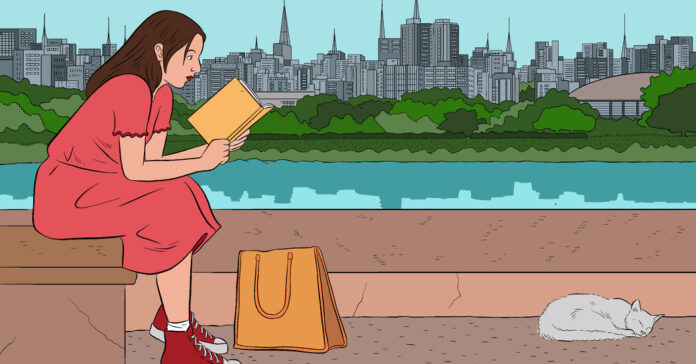There’s also Megafauna, in the historic center of São Paulo, on the ground floor of the city’s most emblematic residential building — the snaking, Modernist housing block called Edifício Copan. The building itself is well worth visiting: It was designed by Oscar Niemeyer, the architect who also designed the country’s capital, Brasília, and the United Nations building in New York. His thoughts and impressions of Brazil and São Paulo can be found in his memoir, “The Curves of Time,” in a translation by Izabel Murat Burbridge.
And there’s more. Mandarina offers the best home delivery options in town. Gato Sem Rabo only sells books written by women, including Sueli Carneiro, one of the most important Brazilian thinkers, as well as Andréa del Fuego, Eliana Alves Cruz and Cidinha da Silva, three of the most celebrated Brazilian writers in recent years. And Patuscada, which is run by the poet Eduardo Lacerda and his wife, Pricila Gunutzmann, belongs to Patuá, perhaps the most important independent publishing house in Brazil. Among their books — unfortunately not available in English translation yet, so you’ll have to wait! — are “Ao pó,” by Morgana Kretzmann, and “Nossa Teresa: Vida e Morte de Uma Santa Suicida,” by Micheliny Verunschk, both of which are winners of the Prêmio São Paulo, one of the three most important literary prizes in Brazil.
And what about the libraries? I’ve heard the city has a particularly wide range.
Also in the historic center of São Paulo, a few steps from Edifício Copan, is the Mário de Andrade Library, the first and main public library in the city, which houses an important collection as well as a theater and study and meeting spaces. Mário de Andrade was an important Brazilian writer who, among other fundamental works, wrote the foundational work of Brazilian Modernism, the poetry collection “Hallucinated City,” which explores the increasingly urban and chaotic metropolis.
Also close to my house is the Alceu Amoroso Lima Public Library, which is the only large public library in Brazil dedicated exclusively to poetry. There you can find many poetry books by Brazilian authors translated into English — for example, “Rilke Shake,” by Angélica Freitas, whose work is an example of how some of the best Brazilian poetry today is being written by women and transgender authors. The English translation of the book, by Hilary Kaplan, was a deserving winner in 2016 of the Best Translated Book Award given by Three Percent, the literary magazine of Open Letter Books, and the National Translation Award, given by the American Literary Translators Association.
Another library that cannot be missed is the Biblioteca de São Paulo, built where one of the largest prisons in the country, the Complexo Penitenciário do Carandiru, used to be. The routine and idiosyncrasies of the prison, where a security crackdown left 111 inmates dead in 1992, was transfigured into fiction by Drauzio Varella, who volunteered as a doctor in the prison for over a decade, in a book that was a best seller in Brazil: “Lockdown: Inside Brazil’s Most Dangerous Prison.”
If the weather is beautiful, what are some parks where I could sit outside with a book?
I can’t talk about São Paulo without mentioning its parks, in particular: Ibirapuera, Villa-Lobos and Água Branca. Ibirapuera Park, with its concert venues, planetarium, library, museums and exhibition spaces, is a favorite of residents of the city. If there is time to visit just one of the city’s many parks, make it Ibirapuera.
In Villa-Lobos Park, you’ll find one of the most modern libraries in São Paulo. The park itself is part of an environmental recovery project on the west side of the city.
Credit: Source link

















